Hiring managers may sort through hundreds of resumes for a single job, meaning they often scan to find the most relevant details. The best way to get noticed as a candidate is to tailor your resume to the employer’s job description. To do this, you need to showcase your most relevant qualifications using their keywords and specific phrases. In this article, we explain why you should be tailoring your resume to job descriptions and provide steps and an example to help you get started.
Related: Download your FREE Resume Template, so you can follow along with this article!
What is tailoring a resume?
When an employer posts a job opening, they include a list of responsibilities and required (or preferred) qualifications. You will take those qualifications and add the same language or keywords throughout your resume to show you can fulfill the role. A tailored resume proves that you have the skills the employer is seeking and have previously used them to create optimal results at work.
Benefits of tailoring your resume
Providing a tailored resume can help you stand out amongst other applicants and improve your chances of getting an interview. Here are a few reasons why:
It demonstrates your alignment with the job.
When looking at your resume, hiring managers are most concerned about how well you fit the job requirements. By focusing on your most relevant experiences and skills, you demonstrate a proven record of performing similar responsibilities.
It proves your interest.
Tailoring your resume can display genuine enthusiasm for the job because you took the extra time and effort to ensure it showcases your best-fit qualifications. Hiring managers will appreciate this thoughtfulness and feel more excited about a candidate who seems eager to work for them.
It emphasizes the employer’s needs.
Hiring managers want to see how a candidate would support their goals. Focusing on your most applicable skills and relevant accomplishments shows them that you are considering their needs, not just what the job can do for you.
It can help you pass applicant tracking systems.
75% of resumes submitted for online applications get rejected by ATS (Applicant Tracking Systems). Learning how to get past this major step can lead to double the number of interviews you receive. Many of today’s hiring managers use these tools to filter through resumes using keywords from the job description. Tailoring your resume using the job description will improve your chances of having your resume read. Applicant Tracking Systems
How to tailor your resume
You can use the following steps to create a more compelling resume by tailoring it to job descriptions:
1. Review the job description.
First, you need to understand what the employer wants and the qualifications required to perform the job. Read its description and write down or highlight any significant keywords related to skills. These may be words or phrases that seem unique to the job or recur throughout the posting.
Then take note of specific requirements, such as necessary education or training and years of experience. Also, look at the order of the responsibilities listed, as those mentioned first may be more of a priority for the employer. You will want to mirror the employer’s priorities when organizing your resume — the first items they mention should be some of the first items you mention.
2. Compare your resume.
Now that you know what the employer is seeking from candidates, you can review your general resume to start tailoring it to their needs. Place your key qualifications in the top half of the page using your summary and experience sections, which will ensure that the hiring manager sees that you fit the role right away.
Look at the experiences already listed on your resume and determine which previous roles are most relevant. If they are your most recent jobs, use a reverse-chronological format. However, you may want to use a functional or combination format if your most relevant job was further back in your history. With those formats, you can steer the focus toward your most relevant skills rather than your work timeline.
3. Update your summary.
The summary section will be at the top of your resume, so it is one of the first things a hiring manager sees. If you have one, use it to showcase your most relevant skills and accomplishments based on the keywords you highlighted. You should also include the title of the job to which you are applying, proving that this is a personalized resume.
For example, say you were applying for a social media marketing position seeking candidates that take the initiative on projects, have at least two years of experience, and are proficient in web marketing and SEO. Your summary might look like this:
Self-motivated social media marketing specialist with over three years of experience in web marketing and social media campaign management. Developed SEO strategies for clients that increase organic traffic, including a 25% boost for a local restaurant group.
4. Customize your work history.
Your work history is the next most visible section on your resume, so the hiring manager should immediately be able to tell that you have relevant experience. If you have a long work history, this may mean you need to minimize or remove any positions that do not align. Or if your most relevant jobs were further back, you may split this section into two for further tailoring: an “[industry] experience” section and an “Other work experience” section.
The bulleted lists under each position should always utilize the job description’s keywords. This specific language shows that you will start the job with the required skills and experience. Keep in mind that your first bullet points should represent the most relevant responsibilities or tasks. For example, if the description emphasizes leadership abilities, start each list with examples of how you led a team, trained peers, or other similar tasks. Even if those were not your main responsibilities, those responsibilities best match what the hiring manager wants.
5. Include measurable results.
To further prove yourself as a qualified candidate, use quantifiable data in your experience section. If you do not already have numbers in your bulleted list, determine where you can add them to demonstrate your impact at previous companies. Hiring managers will be impressed by such achievements because they present the value you provide.
Bonus: Want a resume that gets a 75% response rate from submitted applications? Read this FREE sample of my new book on how to do just that!
An example of a compelling achievement would be: “developed an email marketing campaign that increased monthly sales by 10%.” Hiring managers will be more interested to see your specific results, rather than a sentence such as “created successful marketing campaigns.” Here, they do not get details on how significant of an impact you made on your clients.
6. Update your skills section.
Your summary and work history may not include all the most relevant skills you have, so add any remaining to your skills section. Like those sections, list the employer’s most prioritized skills first using exact keywords from the job description. Examples may include proficiency in specific technologies or technical and soft skills.
Next, include any other relevant skills that showcase the unique value you bring to the role. Be sure to include any “preferred” skills as these may be optional but can help set you apart as a top candidate.
7. Proofread your resume.
Beyond grammatical and spelling errors, review your resume to ensure you used the employer’s keywords and phrases. You should compare your summary section to the overall job description and evaluate whether they match. Next, ensure that each bullet point in your work history is relevant to the job’s responsibilities and requirements. You can also ask a friend or colleague to review it and provide feedback on whether they see alignment.
Aside from passing potential applicant tracking systems, you want to ensure that your language is specific enough to catch the hiring manager’s attention. Seeing familiar words or phrases will demonstrate that you understand their needs and can execute the job’s responsibilities.
Tailored resume example
You can use the following example as a guide for tailoring your resume.
Consider this sample job description:
Job: Sales manager
Job description: Saul’s Supplies provides shipping and business supplies to companies across the Southeast. As a sales manager, you will use your expertise to support our sales team to deliver products to our customers, enabling them to achieve their business goals.
Responsibilities:
- Manage and mentor a team of 10-12 sales representatives, oversee their sales activities.
- Collaborate with the training manager to implement training procedures and ensure compliance.
- Design and implement successful sales strategies.
- Prepare sales budgets and projections.
- Identify new business and customer opportunities.
- Track and analyze sales goals based on key metrics.
- Manage and solve customer complaints.
Minimum requirements:
- Bachelor’s degree in sales, marketing or related field
- At least five years of experience working in sales management
- Proven record of planning sales campaigns and managing sales activities
- Strong interpersonal and communication (written and oral) skills
- Ability to set and achieve sales goals
- Ability to train, lead and motivate sales team members
Here is a sample of a tailored resume that uses keywords from the job description:
Kelley Greene
Enthusiastic and results-driven sales manager with over five years of experience leading local sales teams. Seeking to bring my proven track record of creating and implementing successful strategies to increase sales while attracting and retaining customers to Saul’s Supplies in a regional manager role.
Professional experience
Sales Manager (October 2014-Present)
- Responsible for leading and motivating a team of eight to 10 sales representatives and ensuring they meet quarterly sales goals.
- Established sales objectives through forecasting and developed annual sales budgets accordingly.
- Utilized representatives’ feedback to build enthusiasm and develop training procedures that reduced employee turnover by 25%.
- Developed customer acquisition strategies that increased sales by an average of 15% each year.
Sales Representative (May 2011-October 2014)
- Assisted manager to train over 40 new hires following company procedures.
- Increased number of customer leads by 28% through email marketing campaigns and cold calling.
- Met or exceeded 95% of my quarterly sales goals during employment.
- Provided excellent customer service over the phone, including handling complaints and assisting with purchases.
Education
Bachelor of Arts in Marketing — Michigan State University


